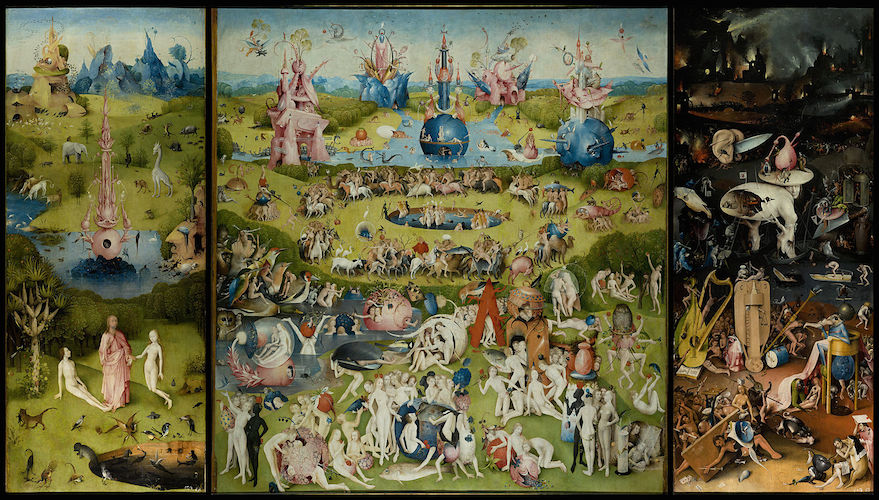Monday Morning Greetings 2017 #2 – I am the Greatest!
Dhanurdhara Swami January 9th, 2017
I have finally been gifted my own residence here in Vṛndāvana after having lived here for over forty years. And what a place! It overlooks the āśrama of Rādhā-ṭilā, a place of Śrī Rādhā’s pastimes. Its simple āśrama residents try to preserve and worship the dhāma by living in exactly in the same way the Six Gosvāmīs did five hundred years ago unencumbered by any so-called modern conveniences. The special feature of Rādhā-ṭilā is that the sādhus here feed the birds of Vṛndāvana one hundred kilos of millet everyday at 2 PM. It attracts thousands and thousands of birds, mostly parrots, freely buzzing around its trees in droves during the feeding that lasts for several hours. The sight is stunning as is the remembrance of the pastime here: the parrots are the disciples of Vṛndā-devī, the goddess of the Vṛndāvana forest, who would fly all over Vraja to scout the safest passage ways for Rādhā to go meet Kṛṣṇa. In reciprocation Rādhā would come here to feed them and that bird feast is still going on after 5,000 years!
My seat for my japa meditation faces a large picture window that perfectly frames the top of this Rādhā-ṭilā forest with its birds. I so much enjoy sitting here and looking at the most beautiful sight in the world: the Vraja forest filled with its birds. But today a thought suddenly came, “Why do I enjoy this so much?” I searched my mind and saw a thought that disturbed me and made me question whether I was enjoying these sights as a service to Kṛṣṇa, or if there was some another reason for my joy? “I now have the best room with the best sight and thus I am better than others.” I was a bit taken aback. Was I becoming like the tourist who enjoys his vacation to an exotic destination and takes pictures, not because he is absorbed in the pleasure of the moment, but to announce to the world that he is also great because he is enjoying more than others? Am I wishing or announcing that most insidious of all thoughts:
“I am the greatest!”
My older brother and myself were big fans of Muhammad Ali. We listened intently to his fights on the radio with Sonny Liston and even went to the Felt Forum at Madison Square Garden to watch him train. We also loved his bravado as he would proudly scream, “I am the greatest!” Now, almost fifty years later, my values have changed. In contrast, I adore the humble, simple servants of Kṛṣṇa whose greatness is that they don’t think themselves better than everyone or anyone. I now worship those who see everything in relation to love and service, but deep within me I still saw the false ego wanting to announce to the world in a similar way, “I am the greatest!” And all because I have the best view. How silly the subtle mind!
Sādhu beware! The false ego is devious and tries to take everything for its own service, even our good qualities, as one can easily become proud of being in goodness, practicing renunciation, or even being humble. Śrīla Bhaktisiddhānta thus even cautioned us about living in Rādhā-kuṇḍa, I assume because he understood how easily that same sinister voice could convince us that we are the best simply because we reside in the topmost place, a conviction that would ironically doom our spiritual life, even when residing in the best place.
I am sitting here writing this article on my seat of prayer enjoying this mystical scene of the Rādhā-ṭilā birds praying that my happiness is only because I am witnessing a spark of Kṛṣṇa’s splendor and feeling His mercy. I have no other qualification and by Śrīla Prabhupāda’s grace that is becoming clear.
